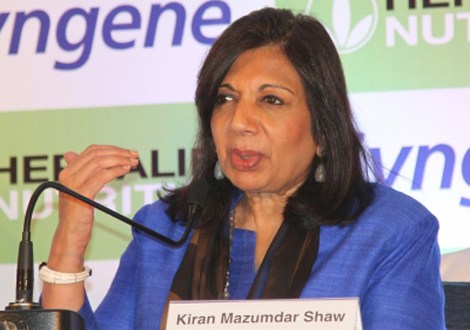She was among 75 teachers to be honoured for their services
Priscilla Shantakumari, a teacher from Government Higher Primary School in Mathikere, Bengaluru, transformed her school from a shed to a 2,000 square feet building by raising funds through donations. The teacher, who has served over 22 years in the profession, also saw to it that children in the neighbourhood attended school by organising a ‘Come to School’ campaign. And even before the government initiated the Akshara Dasoha programme, she introduced a mid-day meal scheme to encourage families to send their children to school.
She is one among the 75 teachers from Karnataka who was honoured on the occasion of Teacher’s Day.
On Wednesday, State awards were presented to 20 primary government school teachers, 10 secondary school teachers, 10 pre-university college teachers and one special teacher. Thirty-four teachers were also given awards under the Teacher’s Welfare Fund. The awards were presented by Chief Minister H.D. Kumaraswamy.
Two schools received the best school award instituted in the name of former education minister and freedom fighter H.G. Govinde Gowda. They are Government Higher Primary School in Arakare, Koppalu, Mysuru district; and the Government Secondary School in Moodala Koppalu, Pandavapura taluk, Mandya district.
Some of the awardees
Environment awareness
Satish C.S. from Government Primary School, Mulluru in Somwarpet taluk of Kodagu district, received the State honour for creating environment awareness among students in the school. He was instrumental in building a small zoo and a vegetable farm within the school premises. He introduced clean energy technology by setting up a solar park.
Promoting science education
Krishnamurthy L. Bhat, assistant teacher, Government Secondary School, Ganesh Nagar, Sirsi, was awarded for cultivating a scientific temperament among students. He has been encouraging students to participate in national-level science exhibitions and competitions. A dedicated teacher, Mr. Bhat ensured that his students perform well in their SSLC exams. In the last five years, 96% of his students have passed the science exam. He is a recipient of the Rajiv Gandhi Memorial Science award and CNR Rao national award.
Extending a helping hand
Manjunath K.N., an English teacher from Government PU College, Ponnampet, Virajpet taluk, Kodagu district, has served 28 years teaching children in rural areas of Karnataka. He is credited with bringing students who had dropped out back to school. In many cases, he has even extended financial help to families so that their children’s education did not suffer. As an NCC officer, he has been promoting sports among students, many of who have participated in national championships.
Cultural promotion
Soumya Jain, a music teacher from Government High School, Varuna, Mysuru district, has been promoting arts and music among students. She has been instrumental in enabling students to participate in national-level dance and music programmes. She is a recipient of the Savitribai Jyotirao Phule award and Rashtriya Yuva Jaina Prashasti.
English will be taught in 1000 government schools: CM
Despite opposition from various quarters to start English in 1,000 government schools on a pilot basis, Chief Minister H.D. Kumaraswamy said it would go ahead as planned. Taking a dig at the watchdogs of those protecting Kannada, the CM said that if a survey was conducted among people, it would show that all those opposing the move were sending their children to English-medium schools. The measure was initiated to make sure that government schools re on par with their private counterparts. “What wrong have the children of farmers, daily wage labourers done? Why should they not be entitled to learn English?” he said.
Three teachers receive national award
Three teachers of government schools in the State were presented the national best teacher award by the Union Ministry for Human Resources Development.

M. Shivakumar, assistant teacher, Government High School, Cheemangala, Chikkaballapura; Shaila R.N., headmistress, Government High School T. Dasarahalli, Bangalore North; and Rameshappa G., physical education teacher, Government Junior College, High School Section, Vijayapura, Devanahalli received the awards from Vice President M. Venkaiah Naidu in New Delhi.
Mr. Shivakumar was awarded for making learning of mathematics effective and attractive to students. Ms. Shaila received the award for bringing a dramatic improvement in the school infrastructure.
Mr. Rameshappa was awarded for promoting physical education and yoga in his school. He has also been working with children with special needs.
source: http://www.thehindu.com / The Hindu / Home> News> Cities> Bengaluru / by Staff Reporter / September 05th, 2018








